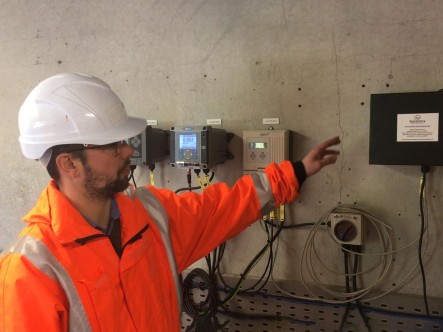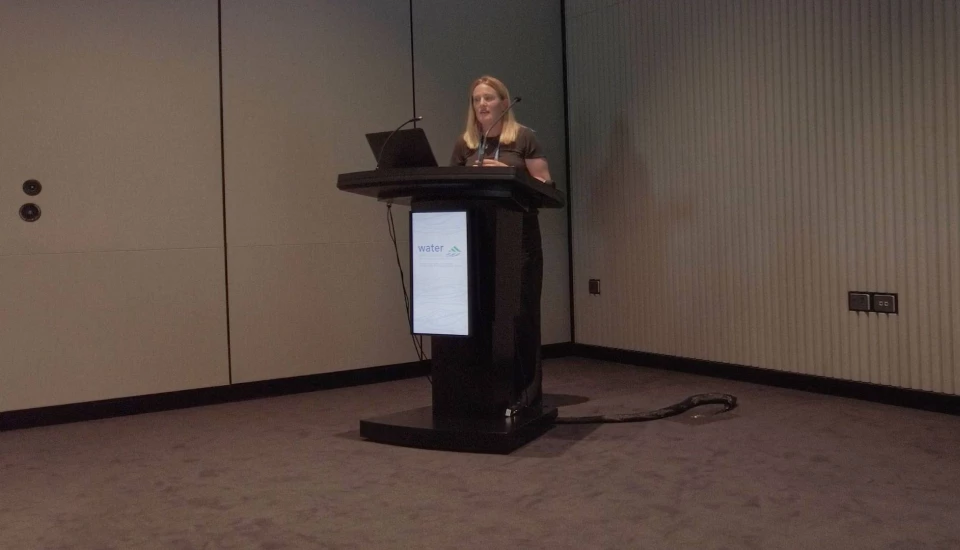
The specified purpose of the multi barrier principle is to:
- prevent hazards from entering the raw water; and
- remove particles, pathogens, and chemical and radiological hazards from the water; and
- kill or inactivate pathogens in the water; and
- maintain the quality of water in the reticulation system.
So, what does it mean to maintain multiple barriers? And what even is a water safety barrier?
At a drinking water treatment plant, a barrier is something that protects the health of the person drinking the water. Barriers can be physical like a filtration process, or based on operational control, like a turbidity divert trigger - ensuring that overly contaminated water doesn’t escape through to subsequent treatment processes. They may be administrative, a site walkover or maintenance check. They can be passive, active, or supporting, i.e., the adsorption provided by a granulated activated carbon filter, the irradiance provided by a UV lamp, or a lab test by an operator.
Meeting the requirements then seems simple. Most water treatment plants have processes designed to achieve the required protozoa log credit removal, and bacterial disinfection. So why has this been specifically included as part of the Water Services Act?
I believe the intent of the inclusion in the act is to make sure that four things are addressed:
- That all potential events are considered, and measures put in place to deal with them.
- That the failure of any one barrier does not immediately mean a health hazard is created.
- There should be more than one barrier for each potential event.
- That suppliers ensure barriers are actively maintained.
Meeting the drinking water standards on any given day, does not mean that a treatment plant can treat an unexpected contaminant and in some situations the barriers can fall like dominos. For example, a New Zealand treatment plant with a dam source was experiencing periodic issues with chlorine decay, despite no clear change in the raw water quality. The chlorine dosing struggled to maintain the bacterial barrier. The cause was established to be significant concentrations of ammonia present in a lower stratified layer in the dam. Once understood, this issue could clearly occur both unexpectedly (temperature induced turnover) or predictably (low dam level). To apply a multi barrier approach, the water safety plan identified routine temperature monitoring across the dam, combined with new lab based and online quality, and a re-design of the chlorine dosing and pH correction.
In another example, a treatment plant sharing a catchment with a major highway was at risk of any imaginable kind of chemical spill. Even an advanced treatment process would struggle with a pesticide or diesel, so rather than attempt to treat it softer barriers were identified. These had previously been established, local NZTA and fire services would notify the treatment supervisor if an accident would potentially threaten the water supply. Critically, the barrier relied on one key piece of information being correct – the phone number – which in this example had been disconnected. Adding QA to annually check the number and contact were still correct was a simple multi barrier approach.

Finally, the most common barrier, critical control points, in my experience have sometimes proved to be false idols. A simple turbidity shutdown to prevent non-compliance is in principle easy to set, understand, and implement. But as time goes by, setpoints are altered, programming is updated or upgraded, and the question gets asked too late – does the shutdown still occur? For a plant which had been performing admirably, it suddenly failed to stop. We produced a re-commissioning procedure to check the coding done decades earlier still functioned as intended. This discovered at some point, a simple reference had disappeared, breaking the shutdown. After fixing that issue, the re-commissioning procedure was considered a barrier to contamination.
To ensure a comprehensive multi barrier approach, a drinking water supplier should take a top-down holistic view of their supply from source to distribution. The supplier should consider the potential for unusual events, and layering triggers to stop them impacting on water safety. What risks might potentially exist in the supply? What is present to stop them? And most importantly, how confident are you, the supplier, that they are being managed.
This to me is the intent of the multibarrier approach. The supplier must make it difficult for the water to become unsafe when people’s lives are at risk.













